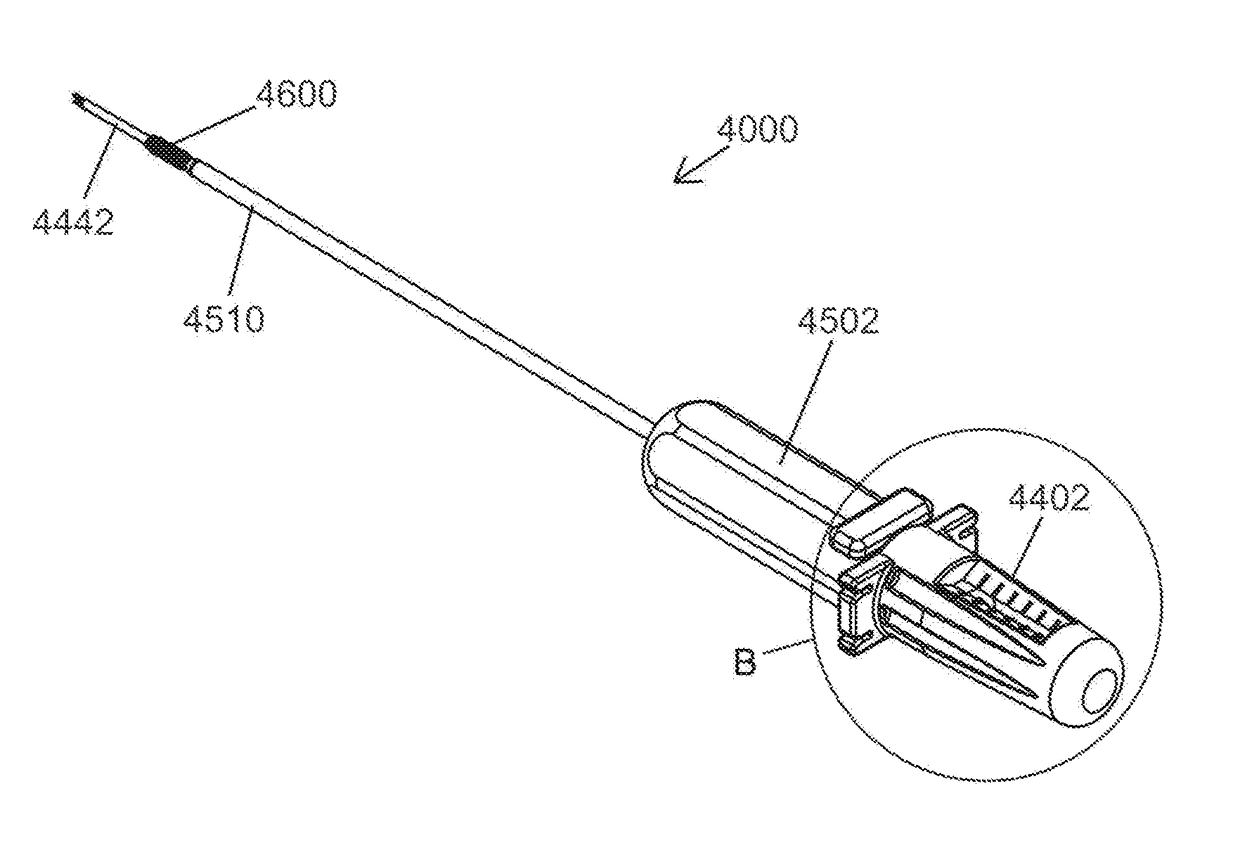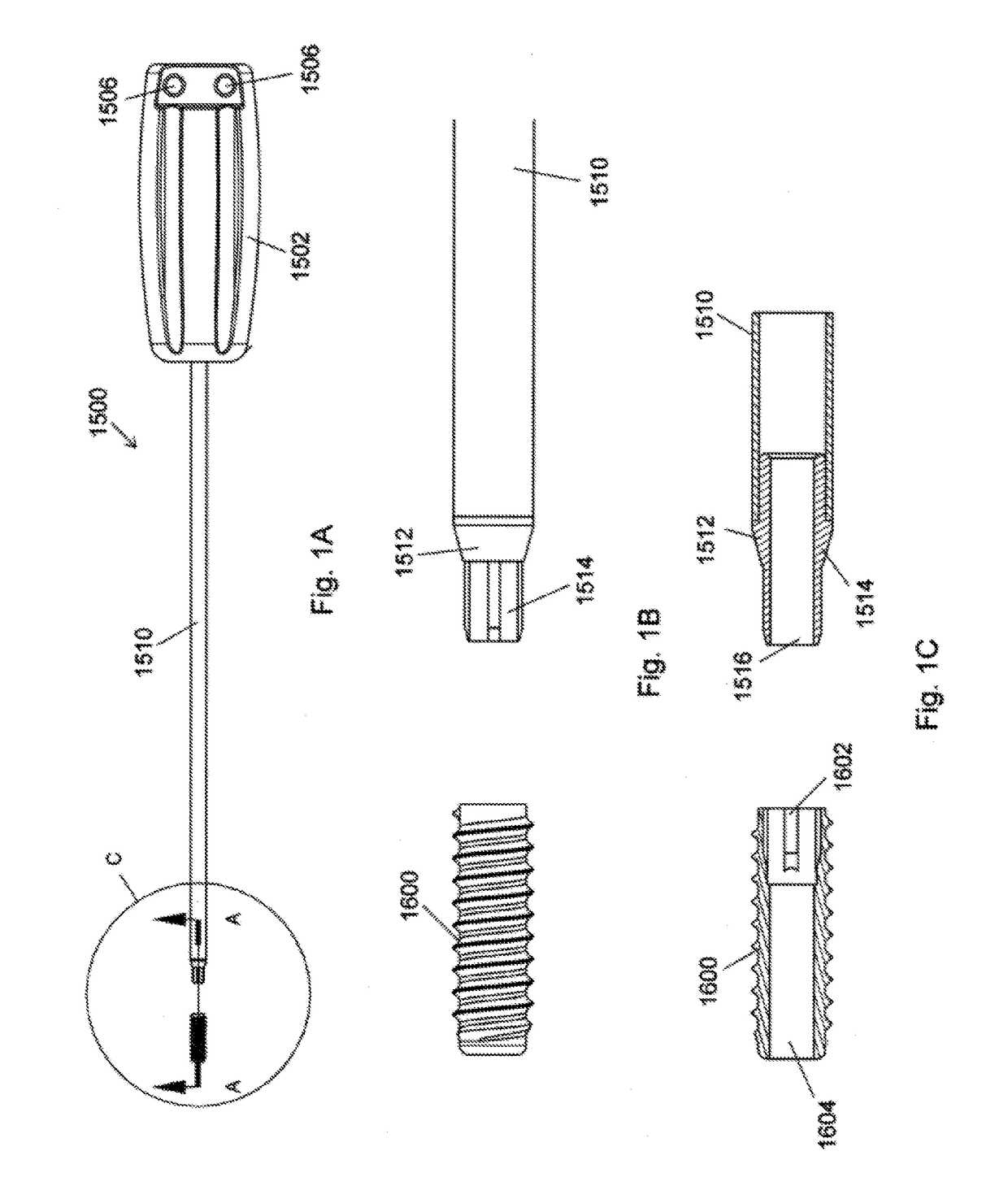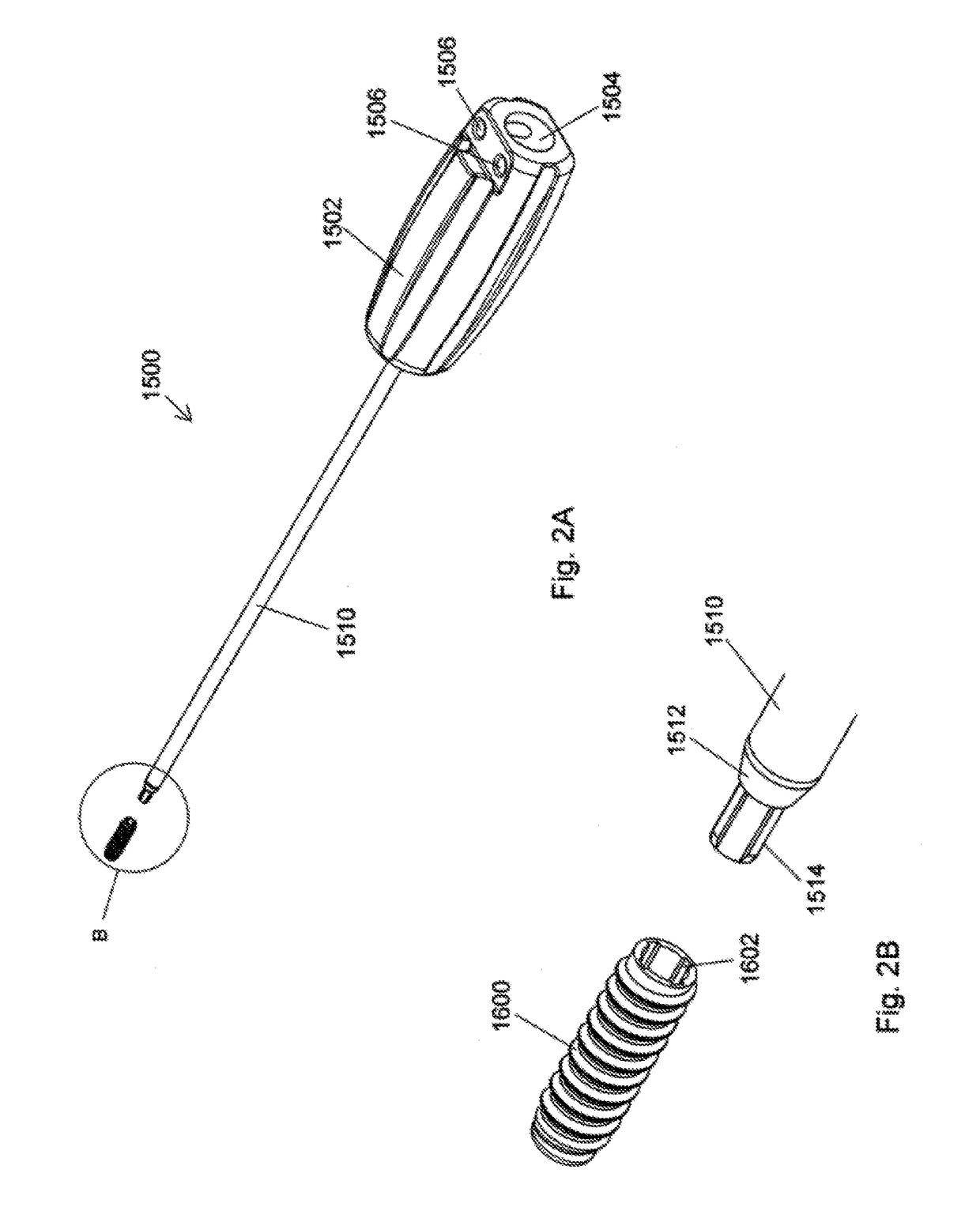[0018]In operation, sutures placed in the graft are drawn into the distal end of the tensioning device. The elongate distal portion of tensioning device is inserted into a properly prepared socket in the target boney surface so that the distal end of the tensioning device, with its sutures is positioned at the bottom of the socket. Tension is then applied to the sutures by pulling on their proximal ends, which extend beyond the proximal portion of the tensioning device to move the graft into the desired position, namely into the prepared socket adjacent to the distal element of the tensioning device. The desired tension may be maintained by cleating proximal portions of the suture(s) into slots optionally formed in the handle of the tensioning device. The anchor (or interference screw) may then be screwed, threaded or otherwise driven into the socket, thereby trapping the sutures or graft between the anchor exterior surface and the socket wall. Critically, twisting of the suture(s) or graft(s) is prevented by the non-rotating distal tubular portion of the tensioning device that remains distal to the anchor distal end during anchor placement. In addition, tension on the sutures and the position of the graft are maintained during placement of the anchor throughout the procedure. After anchor placement, the driver and tensioning device are withdrawn, removed from the site, at which point the sutures may be trimmed to complete the procedure.
[0019]In contrast to the Burkhart and ElAttrache anchor systems, suture tensioning and establishment of the graft position are not accomplished using the driver's distal end or using an implant positioned in the driver's distal end. Rather, suture tension and graft position are established and maintained by the distal portion of a non-rotating tensioning device that extends beyond the driver and anchor distal ends. Because of this, the transmission of torque to the sutures and / or graft by the driver present in the Burkhart and ElAttrache systems is eliminated, along with its associated suture or graft spin.
[0020]The system and method of the instant invention provide a simplification over other currently available anchoring methods and hardware in that fewer steps are required and moreover the anchor has a simple, single-piece construction. The anchor system is scalable and, due to its simple construction, may be used with anchors smaller than those permitted using other currently available systems. The composition and construction in the anchor may be readily modified simply by changing the material from which it is constructed, by increasing or reducing the diameter or length of the anchor, by increasing or decreasing the wall thickness of the anchor, by modifying the profile of the exterior, or by any combination of these means. All such modifications are contemplated as within the scope of the present invention.
[0034]An anchor placement system of the present embodiment may also include a mechanism for releasably preventing relative axial and rotational movement between the driver and the tensioning device, such means optionally positioned within the cannulation (or “lumen”) of the driver. In a first condition, used during tensioning of the suture, relative axial and rotational motion is of the driver relative to the tensioning device is prevented. In a second condition, used during placement of the anchor, the driver may be advanced axially on the tensioning device to bring the anchor to the socket, and rotated to screw the anchor into the socket, with the tensioning device remaining stationery so as to maintain suture tension and prevent twisting of the sutures.
[0035]In a particularly preferred embodiment, prevention of relative motion is provided by a removable key having one or more protrusions, coupled with features formed on the handles of the tensioning device and driver such that, when the features are in alignment, engagement by the one or more protrusions of the key prevents relative axial or rotational movement between the torque-transmitting driver and the tensioning device. Removal of the key allows the driver to be advanced distally and rotated relative to the tensioning device. Other embodiments are anticipated in which other means are used to releasably prevent relative motion.
[0036]Certain preferred embodiments of the present invention are configured for one-handed operation by the surgeon. In these embodiments, a suitable tensioning device is irremovably (i.e., permanently) affixed to and / or positioned within an associated driver device, the driver device is axially movable between a first proximal position and a second distal position relative to the tensioning device. In the first proximal position, the distal portion of the tensioning device extends distally beyond the implant so as to allow tensioning of sutures and positioning of a graft as described previously herein as well as in related co-pending applications incorporated herein by reference. Advancing the driver distally toward its second, distal position brings the implant to the prepared socket in preparation for placement. Thereafter, the implant is threaded or axially driven into the socket. Distal motion by the driver relative to the tensioning device is resisted by a spring within the driver handle. The spring tension is sufficient to ensure that the distal end of the tensioning device remains in contact with the bottom of the socket to maintain graft position and to prevent rotation of the tensioning device during anchor placement.
 Login to view more
Login to view more  Login to view more
Login to view more 


